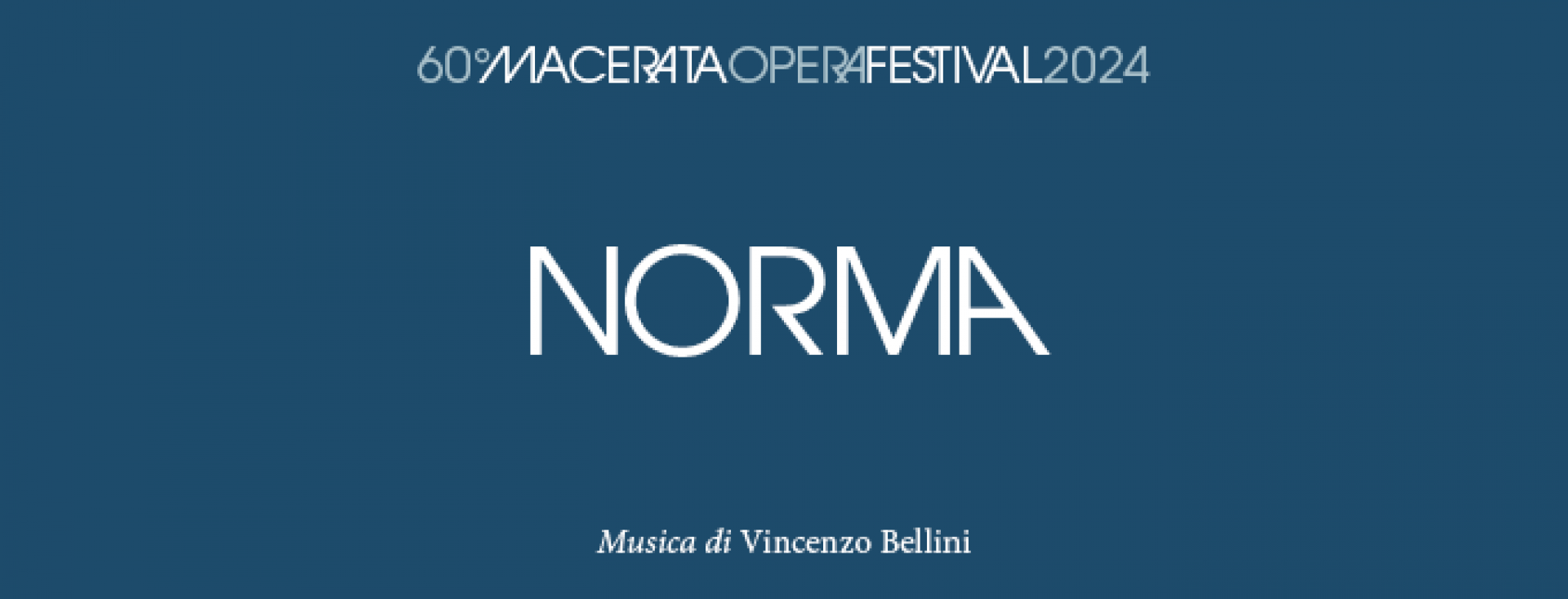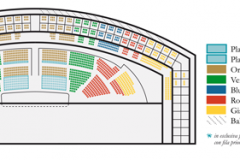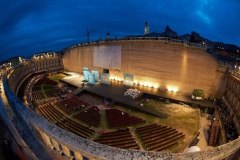Norma Macerata Opera Festival 2024
Mo | Tu | We | Th | Fr | Sa | Su |
Norma (20 e 26 luglio, 4 e 9 agosto) di Vincenzo Bellini festeggia il traguardo delle 60 edizioni di festival operistico allo Sferisterio: scegliendo il capolavoro del Cigno di Catania – che era tra le ipotesi valutate ai primi del Novecento quando si decise di trasformare lo stadio della palla al bracciale in teatro – si celebra la città e coloro che vollero portare l’opera in questo luogo. Il nuovo allestimento sarà firmato dalla regista e documentarista milanese Maria Mauti, alla sua prima esperienza con il teatro d’opera; sul podio un veterano del belcanto come Fabrizio Maria Carminati, direttore artistico del Teatro Bellini di Catania. Protagonista Marta Torbidoni (Norma), giovane soprano marchigiano che si sta imponendo sui palcoscenici di tutto il mondo, affiancata da un’altra voce molto apprezzata come quella del soprano Roberta Mantegna (Adalgisa), mentre i principali ruoli maschili saranno sostenuti da Antonio Poli (Pollione) e Riccardo Fassi (Oroveso).
Opera in due atti su libretto di Felice Romani, tratto dalla tragedia di Louis-Alexandre Soumet (1786-1845). Composta da Vincenzo Bellini in meno di tre mesi, nel 1831, debuttò al Teatro alla Scala il 26 dicembre dello stesso anno registrando un fiasco clamoroso a causa di ostilità nei confronti sia del Cigno catanese che della protagonista Giuditta Pasta. Considerato uno dei capolavori assoluti dell’opera Romantica, narra una vicenda affine al mito di Medea, è vicenda di amore e gelosia, ripicche e vendette tra innamorati traditi.
Program and cast
Macerata Sferisterio
History
An ancient Italian national sport or pallone col bracciale was the most popular sport in Italy for almost five centuries. This game dated back to the 15th century. The people of Macerata decided that they needed somewhere large to play and watch it; a place that could also be used for public spectacles such as circuses and even bull fights. One hundred citizens raised the money themselves, and got Ireneo Aleandri to design and build it. The design involved the destruction and rebuilding of some of the historic city walls next to the Porta Mercato gate.
The strait side of the arena is a wall 18 metres high and 88 metres long, along which is a line of arches separated by 56 columns carrying a double row of boxes, and a stone gallery, all in Neoclassical style.
Over the years the popularity of pallone decreased and that of football replaced it. In 1919 the surface was levelled to allow for this, and also for tennis courts. The arena had been used for the occasional theatrical event from 1871, but from about 1914 opera began to be put on there.
Present day use[edit]
In 1921, as the first presentation of what would become the Sferisterio Opera Festival, Pieralberto Conti staged Verdi's Aida paid for by the soprano, Francisca Solari. This was followed by all parts of the arena, both front- and back-stage, being renovated and electricity introduced.
Today it holds an audience of over 3,000. The stage is 14.5 meters deep and 40 meters wide, with 10 meter wings each side of that. It is rather unusual shape for musical performances (musicians at each end of the pit cannot hear each other) but the acoustics are surprisingly good (at least near the middle).
The present day opera festival, beginning in the late 1980s and under the auspices of the Macerata Opera, takes place in this location.

 EN
EN DE
DE IT
IT FR
FR ES
ES RU
RU JP
JP RO
RO
 Seating plan
Seating plan 